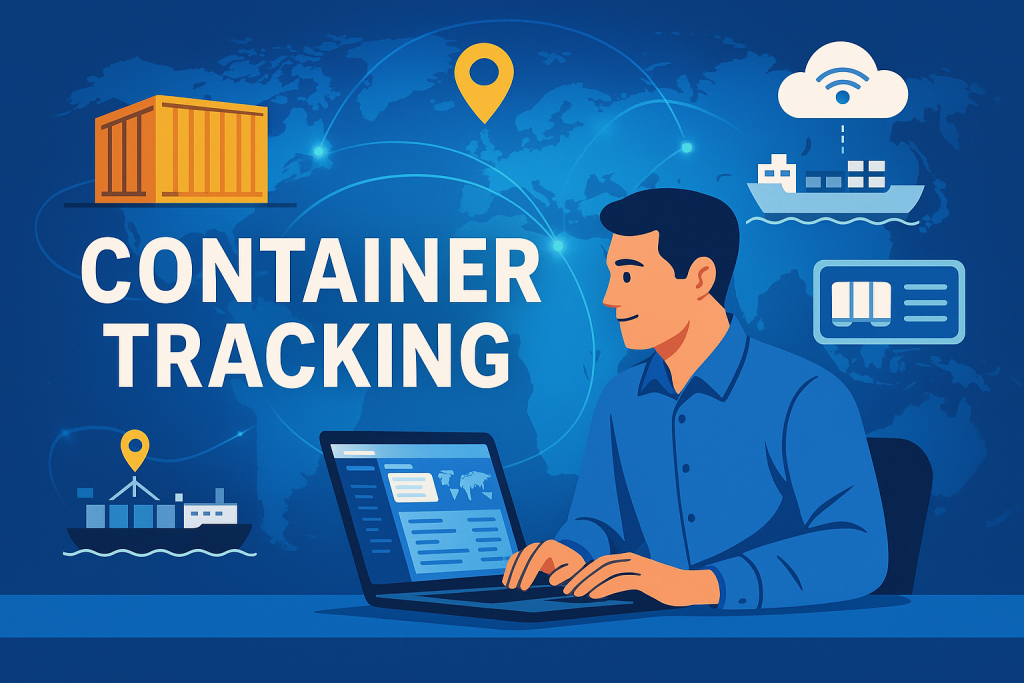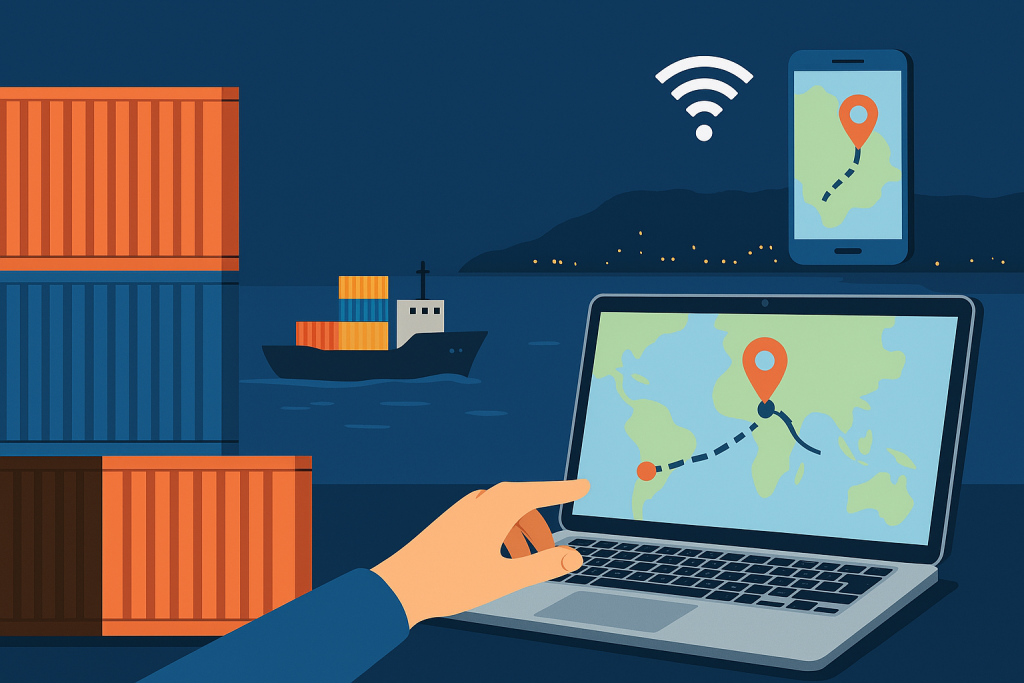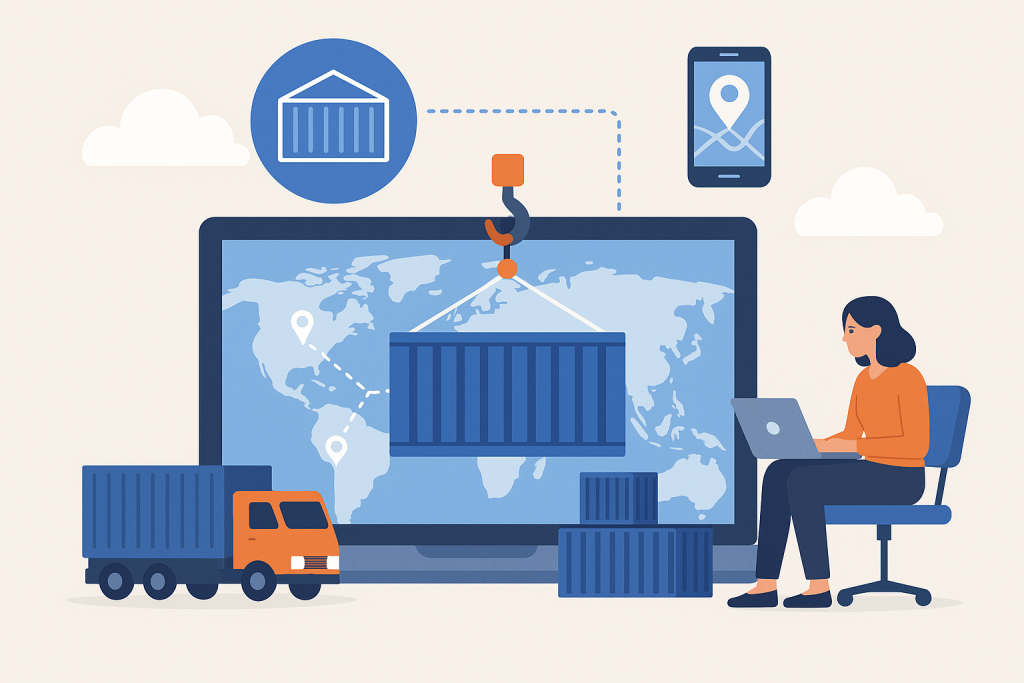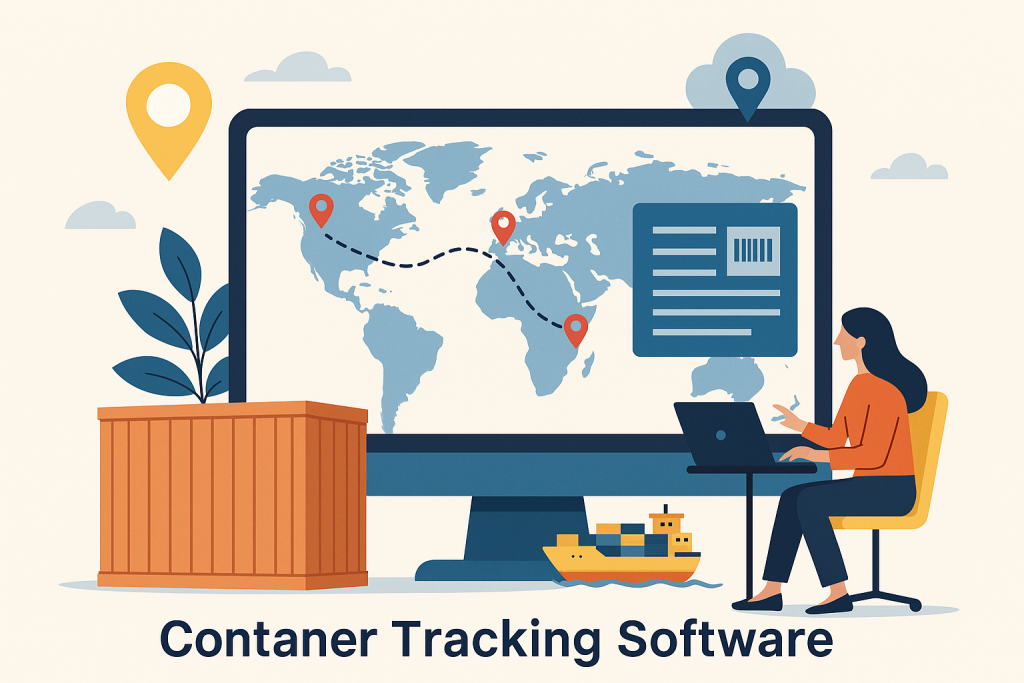What Is Container tracking software and Why Does It Matter?
Whether you're a freight forwarder, an importer/exporter, or part of a third-party logistics (3PL) company, being able to track containers in real-time reduces uncertainty, boosts customer confidence, and helps prevent costly delays.

🚢 What Is Container tracking software?
Container tracking refers to the ability to monitor the location and status of shipping containers as they move across the globe—by sea, rail, or truck. It typically involves:
- Real-time GPS and satellite data
- Integration with carrier schedules and port systems
- Automatic alerts and milestone updates
This process is made possible by container tracking software, which consolidates this data into a user-friendly platform for logistics teams and clients.
🧭 How Does Container Tracking Software Work?
Container tracking platforms connect with various data sources to give you up-to-date visibility into your shipments. These may include:
- Shipping line APIs for voyage schedules and container milestones
- IoT sensors or smart devices placed on containers
- AIS (Automatic Identification System) data for vessel positioning
- Terminal systems for gate-in/gate-out updates
Modern solutions offer dashboards that allow users to:
✅ View real-time container locations
✅ Set up automated notifications (e.g., ETA changes, customs holds)
✅ Track by container number, booking ID, or B/L
✅ Access a global map with live vessel traffic

📊 Why Container tracking software Matters
Let’s explore the top reasons why container tracking is more than just a nice-to-have tool.
1. Better Planning & Efficiency
With accurate ETAs, you can schedule labor, trucking, and warehouse operations more precisely—saving time and money.
2. Proactive Exception Management
Delays happen. But knowing about them early means you can re-route, notify clients, or adjust expectations proactively.
3. Improved Customer Experience
Clients increasingly expect Amazon-level transparency. Container tracking delivers that visibility across international supply chains.
4. Cost Savings
Avoid detention/demurrage fees, reduce idle time, and prevent downstream disruptions through timely updates.
5. Data for Strategic Decisions
Tracking software gives you historical performance data—like average transit times, lane reliability, or carrier performance—fueling smarter long-term decisions.
🔍 Who Uses Container Tracking Software?
Container tracking is used across the supply chain, including:
- Freight forwarders: To centralize visibility across carriers and ports
- Shippers and import/export companies: To plan better and keep clients informed
- 3PLs and warehouse operators: To align inbound planning
- Retailers and eCommerce businesses: To enhance fulfillment visibility

🛠️ What to Look For in Container Tracking Software
When choosing a solution, consider features such as:
Feature | Why It Matters |
Multi-carrier integration | So you can track across all shipping lines |
Real-time GPS updates | For live vessel positioning |
Automated alerts | Keeps your team informed instantly |
Custom tracking links | For clients or internal stakeholders |
Global map visualization | Clear, intuitive view of shipments |
Historical analytics | Analyze routes, delays, and carrier KPIs |
➡️ Modern tools like Linbis offer container tracking as part of a full logistics suite, helping teams manage visibility from booking to delivery.
🌍 The Future of Container tracking software
With rising supply chain complexity and customer demands, the future of container tracking will rely on:
- AI-powered delay predictions
- Blockchain-backed traceability
- End-to-end visibility across ocean, rail, and trucking legs
- Mobile-first solutions with push notifications
Container tracking will evolve from being reactive to intelligent and predictive—turning data into decisions.

✅ Final Thoughts
In today’s global logistics ecosystem, container tracking is no longer optional—it’s essential. By implementing the right software, businesses can:
- Enhance operational efficiency
- Build trust with clients
- Cut costs tied to delays and uncertainty
- Make informed, strategic decisions
If your current system doesn’t provide container visibility, it’s time to explore a smarter solution.
